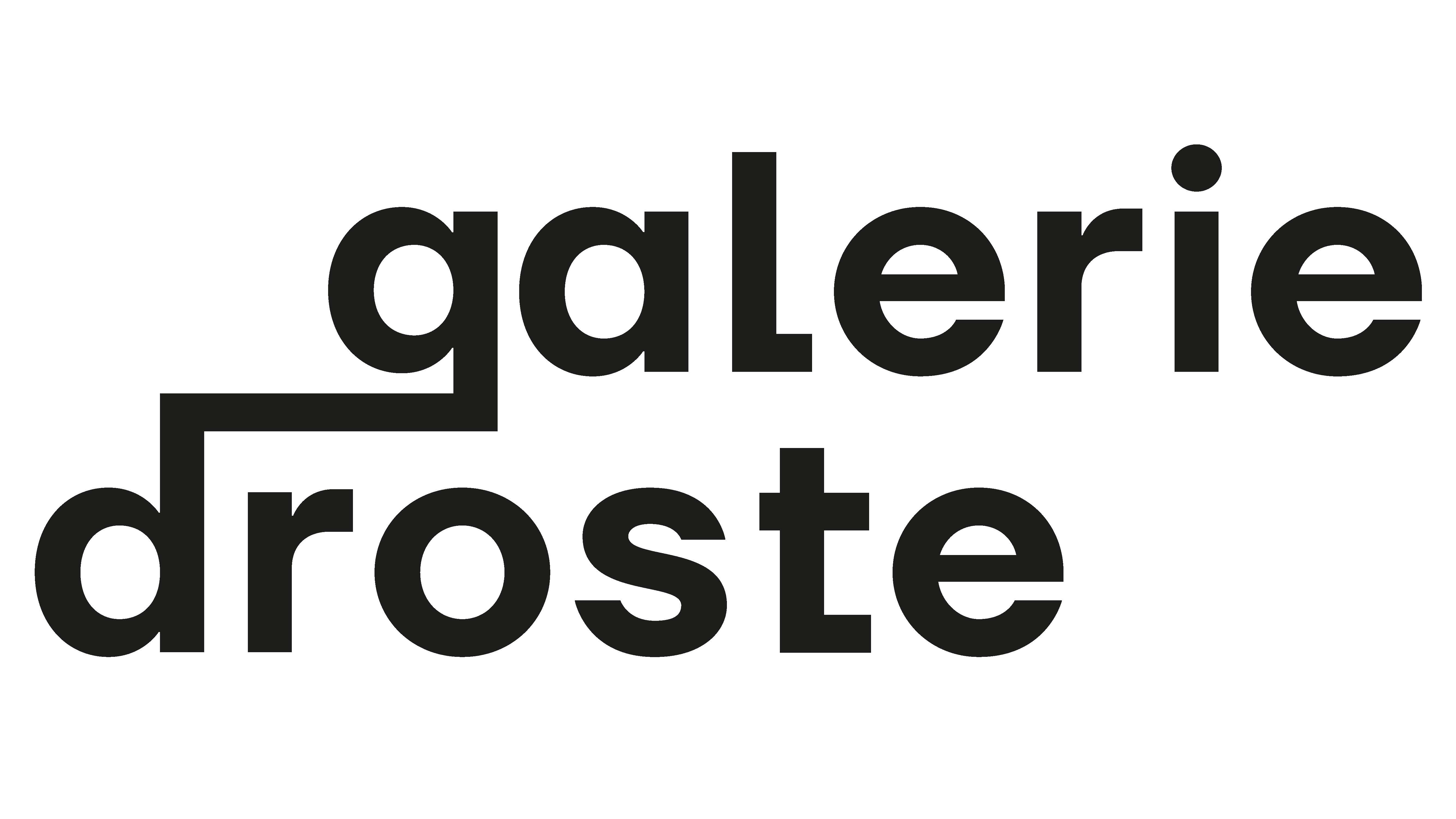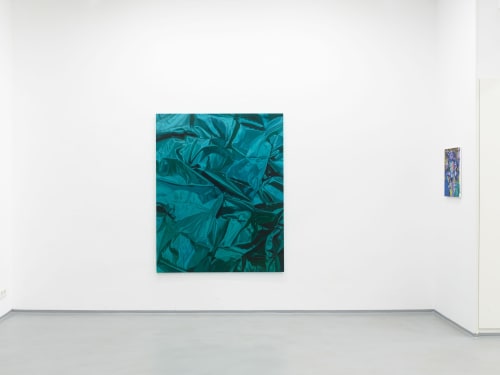For her second solo exhibition at Galerie Droste, French artist Eve Malherbe presents a group of seven paintings in which color subtly assumes its most beautiful role. Rising to the rank of protagonist, it spreads out generously in mimetic, acidulous waves. The only narrative canvas in the series, Amor, serves as a framework for the other works, which gradually abandon a single staged discourse and become embodied in an additional abstraction.
Around Amor, like a progression, everything seems to unravel into layers, leading us into a zone where the boundaries between flower and fabric become increasingly blurred. It's also the story of a world that comes after Eden, where a cloak covers shame, and solitude imposes itself on people now estranged from each other and on bouquets of cut flowers deprived of their roots.
Flowers and drapery are, as we well know, relicts, almost obligatory tests and objects of Western art history. First and foremost, for their aesthetic appeal, but also because they reveal a mastery of representation. However recurrent they may be, they are no less fascinating for the artists who project all their style and the richness of their craftsmanship into fabulous works of painting, sculpture or drawing. In the case of Eve Malherbe, the same is true of her obsession with curves, which seem to have the same vocabulary in both petals and folds.
In 1874, 160 years ago, Eva Gonzalès painted A Dressing Room at the Italians, with a bouquet of fresh flowers and a curtain with a striking golden sheen in the far-left corner, as much a part of the scene as the two figures depicted. Today, in the exhibition L'Épaisseur des solitudes, we find the same modern upheaval, pushed to a kind of paroxysm, where the stakes of the visible and the invisible are still played out, without falling into the facile or sentimentalist pitfalls of narrative; a particular attention to detail then becomes possible, and this detail becomes the only thing to see, to look at. It concentrates the eros that had previously been relegated to the fabric.
In a climate of joyful pessimism, with an unabashedly brilliant pop accent, the artist seems to have reached a kind of maturity, both technical and theoretical. The highest degree of achievement of a gesture that returns like an old friend and of which she never tires: bodies that speak secretly, without figurative presence, flowers that link her to the living and that will never cease to wither. A finitude, then, and the dizziness of the other, expressed through a succession of skins. Whether flesh, silk or corolla, they unfold as if to trace the continuity of life despite their solitudes.
- Laure Saffroy-Lepesqueur
Eve Malherbe (*1987, FR) lives and works in Oise, France. She graduated from the universities of Marseille and Lille in visual arts, studied interior architecture and design at the Camondo School in Paris, and art history at the University of Valencia, Spain

